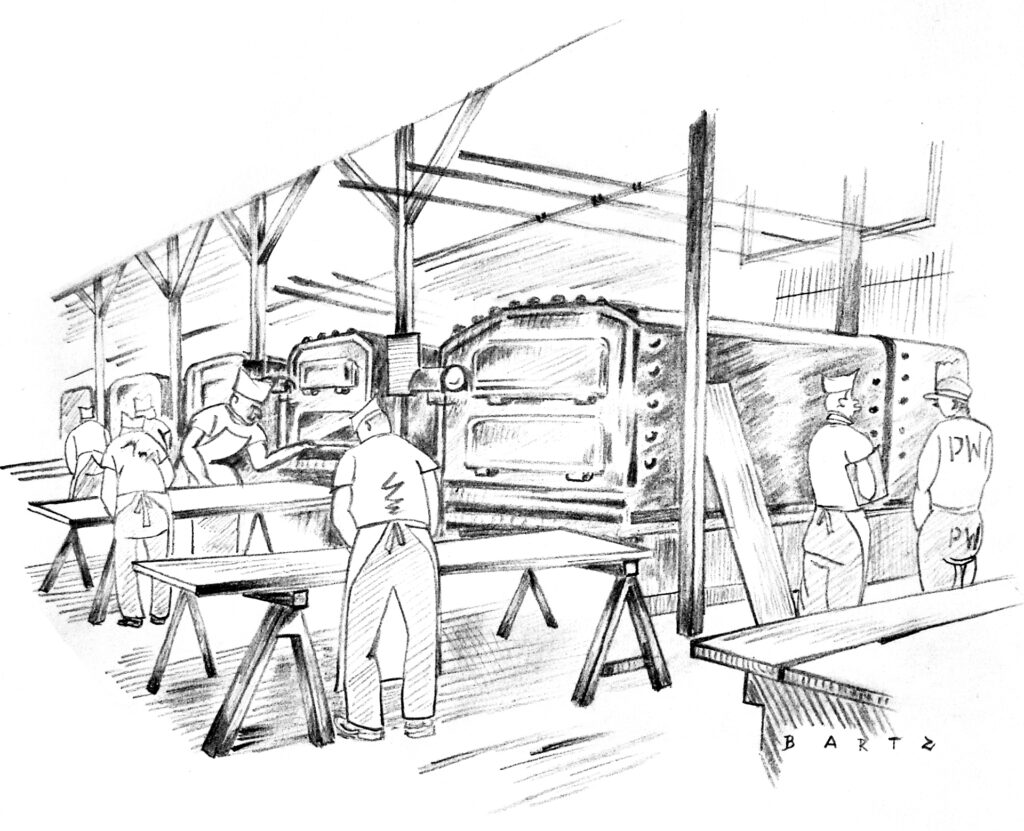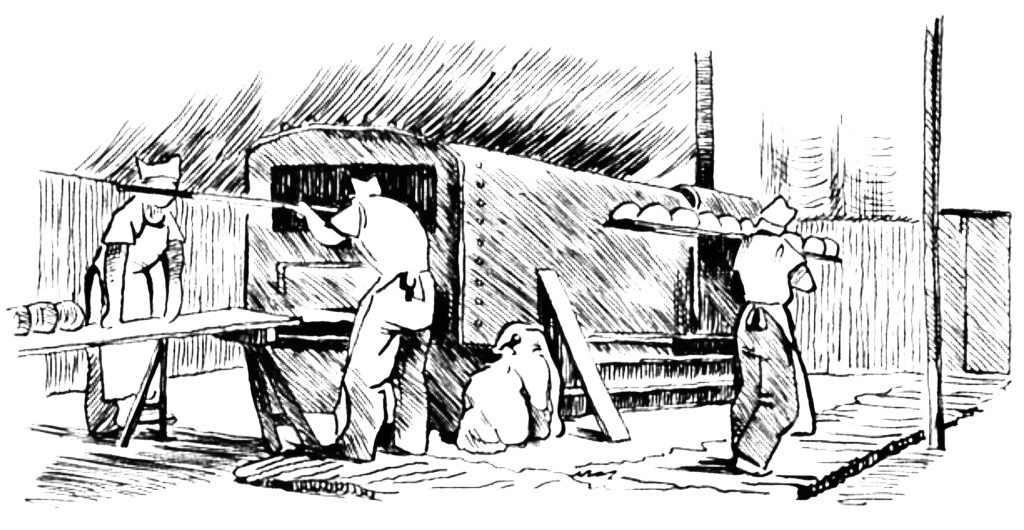CCPWE 19 covered more than 100 hectares between Foucarville and Ravenoville. From 15,000 at the end of November 1944, the prisoners reached 60,000 less than six months later. After several days’ train travel, most of them arrived exhausted, hungry and dehydrated in successive waves of up to 10,000 men.
60,000 prisoners in a small village of 240 inhabitants! The American authorities in charge of the camp were faced with an urgent challenge: how to feed a population the size of the town of Caen?
And the answer is bread, the staple food. But it has to be made. Like the

Prisoners recalled the whereabouts of abandoned German ovens, as well as those left in Cherbourg by the British army. Major Nelson, the post executive officer, was given the task of recovering the ovens, as well as a dough kneading and flour sifting machine.
These ovens are disassembled, then reassembled to provide five working ovens in the American camp. The military authorities now had to build a bakery and find bakers. This is not an insurmountable obstacle in the midst of such a concentration of men.
By spring 1945, the bakery was running at full capacity under the direction of prisoner Stefen Hofstödter, head baker “who hadn’t touched a bread oven in 12 years”. Thanks to the institution of 3/8 shifts in teams of 55 prisoners – as shown in the drawing below – the bakery can produce 18 tons of bread a day, or 60,000 loaves, in other words one loaf per prisoner, according to Kennedy sources. This success story was celebrated with the millionth loaf of bread from the ovens on June 11, 1945. The celebration was illustrated by cartoons and a poem in the camp newspaper Die Zukunft(The Future) of June 11, 1945.
Recovery furnace

After the camp was disbanded, Colonel Warren J. Kennedy, camp commander, wrote the following in his scrapbook:
“The atmosphere in the madhouse that was our bakery was absolutely unique: that of former enemies working together to meet the daily quota! Bread, a symbol I’ll never forget”.
Prisoners’ daily bread
The judgment is undoubtedly less favourable at prisoner level. The food situation at CCPWE 19 depended greatly on the period and the day. All the prisoners agreed, however, that they suffered from hunger and were in a very weak state. Yet the Americans had to comply with the Geneva Convention, which stipulates in Article 11 that “the food ration of prisoners of war shall be equivalent in quantity and quality to that of depot troops”.
In addition, it is customary to adapt the diet of captives according to the type of work performed, although officers are exempt from this requirement. Captives under the age of 18 receive 900 calories a day.
Finally, there are the privileged few: the Lagerfüher, the German chiefs to whom the Americans have delegated some of the camp’s authority. There’s a saying in the camp that sums up the situation: ”
Theft of this precious commodity is rigorously punished: a “thief” sign is hung on the back of anyone caught red-handed. Bread was also bartered. One of the camp’s prisoners wrote in his diary: “The bread I receive in exchange for my cigarettes is a physical and psychological balm. You become another person”. An entry that reminds us that captivity was first and foremost a bodily experience, determined, more often than not, by lack.
Anne Broilliard
